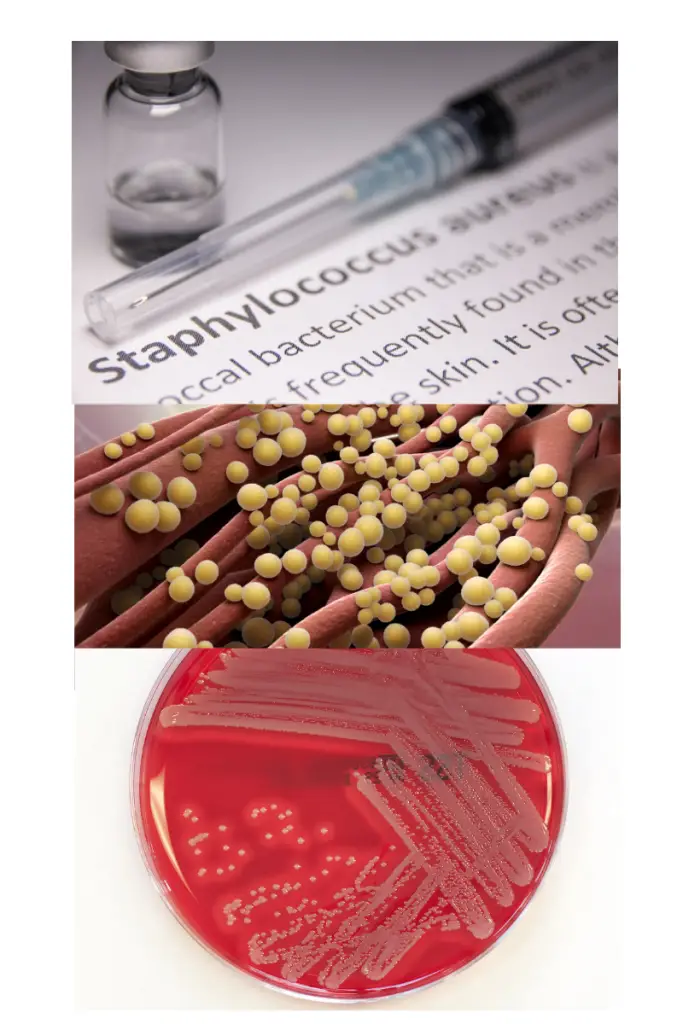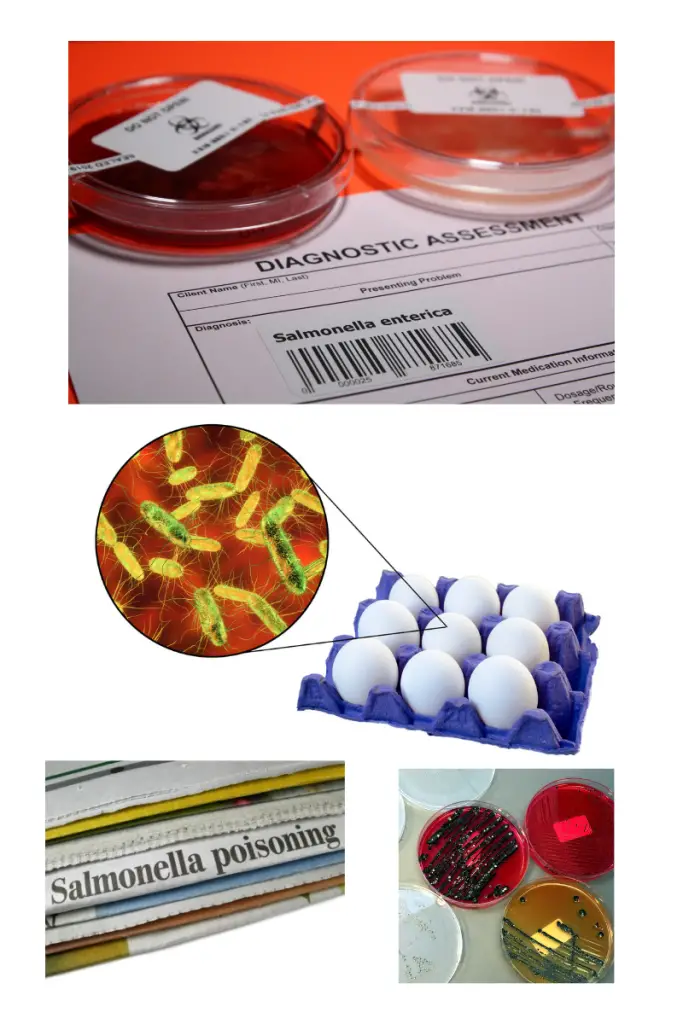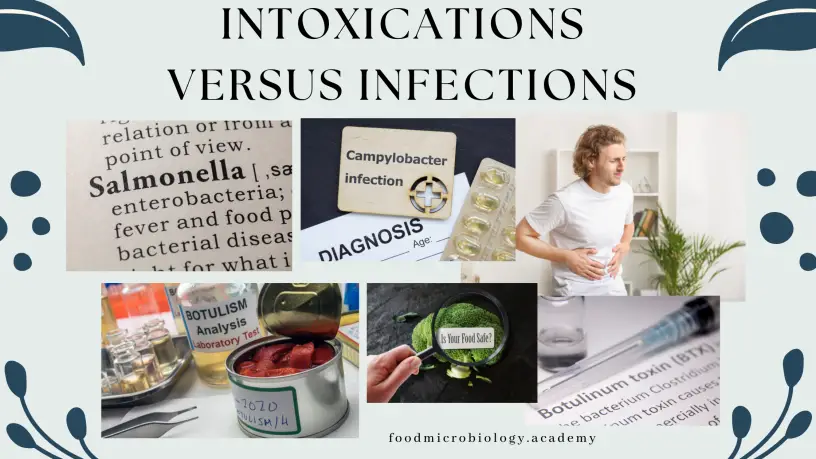How many times have your had a bout of ‘gastro’ and immediately cast your mind back to your last meal thinking, what did I eat?, how was it cooked?, what did I pick up in that meal that has made me sick?, and so on. Well, to get straight to the point here, your last meal is highly unlikely to have given you a dose of foodborne disease. Let me explain…
Firstly, foodborne illness or gastrointestinal disease can be either an infection or an intoxication. Now, you might be thinking, huh? an intoxication? I’m not intoxicated, I didn’t drink (alcohol) or don’t drink, what is this guy on about. Well, an intoxication is simply any disease caused by a toxin. The toxin can be alcohol, ethanol to be precise, or it can be a toxin produced by a toxigenic bacterium – one of the more common ones would be Staphylococcus aureus, which produces multiple heat-stable toxins that can cause gastrointestinal intoxications. Let us delve deeper, and understand how foodborne intoxications occur. A food product already contains the bacterium or is contained during preparation from the food handler. This is an especially common means of food contamination with S. aureus, just because it is so common as a normal inhabitant of people’s skin and nose, for example. So now we have S. aureus bacteria on/in the food. If the food is left under conditions that allow the bacteria to grow, they do so, and produce toxin. At this point, the food may be heated, which kills off the bacteria. However, the toxin is heat-stable, or at least more thermostable than the vegetative cells, and they remain in the food product even though the vegetative bacterial cells are eliminated by the heat treatment. When someone eats this food, they are consuming the toxin, but not the bacteria that have been killed by the heat treatment. The food handler may be secure in their action of heating the food, and the effect it has in a food safety sense. However, they are doing little to render the food safe. Toxin remains, enough toxin to cause an intoxication disease. Not too long after someone consumes the food, perhaps four to six hours later, they get sick as they have been ‘poisoned’ by the toxin, they have been intoxicated. In this case, the food they consumed at they last meal was almost certainly responsible for this foodborne illness, but it has to be an intoxication, due to the extremely short timeframe of just a few hours.

Now, let us consider foodborne infections. Infections are different from intoxications as these diseases result from the growth of microorganisms inside our body. Picture this as a typical scenario: An ingredient is used in the preparation of a home-cooked dish, the cooking process results in an undercooked ingredient, we eat that undercooked ingredient and consume the bacteria, which could be a pretty small amount or a large amount, the bacteria grow inside our body and make us sick. This is an infection. A common example might be meat, chicken for example, which is invariably contaminated with Campylobacter jejune or Salmonella enterica, for example, from cross-contamination during the slaughtering and processing procedure. If this chicken is consumed undercooked, some or many of the bacteria remain. If consumed immediately, we may consume a small (or large) amount of the contamination microorganisms. However, if the chicken is subjected to temperature abuse, then the bacteria will likely grow to high numbers within the chicken and we will consume this highly contaminated chicken without realising it. You might say, hey hang on, I really do think I’m going to know if a food item is going to make by sick, I’ll know if it is “off”. We,, that’s kind of a misconception, because almost without exception, you won’t know. Foods unsafe to eat nearly always look, smell and taste normal. The foods that are “off”, and noticeably spoiled, are those that have been overgrown by food spoilage microorganisms, bacteria or fungi, which are generally not capable of making you sick. They are spoilage microorganisms and not pathogenic microorganisms, and therefore cannot make you sick, they just don’t have the capacity to do so. This brings me to my last point – how long does all this take? …from point of consumption until you realise you have “gastro”? An absolute minimum of 24 hours, but typically, 48 to 72 hours, and in some cases longer. This is because it takes time for the bacteria to establish in your body and then to grow to high enough numbers that your immune system cannot overcome, which results in clinical disease. So basically, once symptoms typical of that disease present, you have lost the battle.

So there you have it, the difference between intoxications and infections in the context of foodborne disease. Next time you have what seems like a bout of food poisoning, a foodborne disease, it would be better practice to case your mind back at least or three days, possible more, to identify any risky food safety situations you can recall. Of course though, you may have COVID-19, which under rare circumstances, can present gastrointestinal symptoms. If you’re interested in reading more on this, please do take a look at our blog articles below from 2020 and 2021 on this topic.
2 February 2020 – Putting COVID-19 and foodborne disease into perspective https://foodmicrobiology.academy/2020/02/21/putting-covid-19-and-foodborne-disease-into-perspective/
5 April 2020 – Gastro Coronovirus https://foodmicrobiology.academy/2020/04/05/gastro-coronavirus/
17 August 2020 – The global food supply chain transmission possibility of SARS-CoV-2 https://foodmicrobiology.academy/2020/08/17/the-global-food-supply-chain-transmission-possibility-of-sars-cov-2/
1 January 2021 – Food safety and COVID-19 https://foodmicrobiology.academy/2021/01/01/food-safety-and-covid-19/

